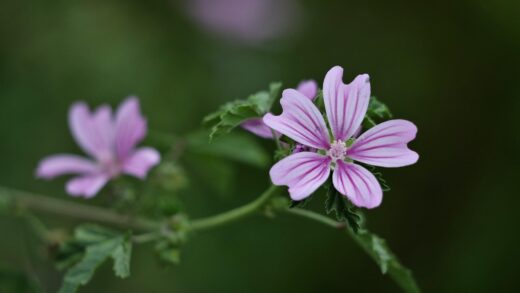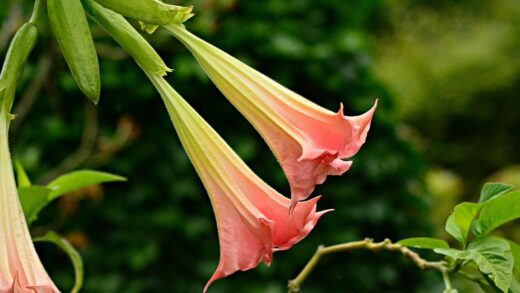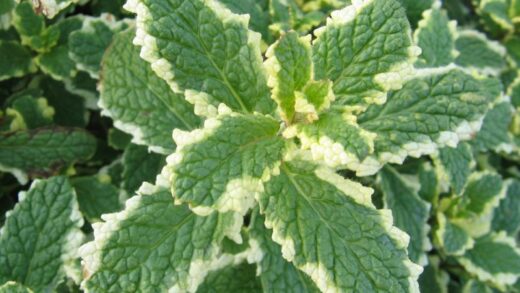The successful overwintering of Arum maculatum is a critical phase in its annual cycle, ensuring its survival and robust return the following spring. As a plant native to temperate European woodlands, it is naturally well-equipped to handle cold winter conditions, possessing an underground tuber that acts as a protected energy reserve. However, in a garden setting, particularly in regions with exceptionally harsh winters or for container-grown specimens, a few preparatory steps can provide valuable insurance against potential damage. Understanding its dormancy and providing appropriate protection will safeguard the plant, allowing it to complete its life cycle and thrive year after year.
The overwintering process for cuckoo-pint begins long before the first frosts arrive. The plant’s preparation for winter starts in the summer as it enters its dormant phase. After flowering and fruiting, the energy produced by the leaves through photosynthesis is transported down and stored in the tuber. This is why it is essential to allow the foliage to die back naturally and not to cut it down prematurely. A healthy, well-nourished tuber, fattened by a successful growing season, is the plant’s best defense against the challenges of winter.
Arum maculatum is generally hardy in USDA zones 6 through 9, meaning it can tolerate winter temperatures that dip down to approximately -23°C (-10°F) when planted in the ground. In its natural habitat, the tuber is insulated by the soil and a protective layer of fallen leaves and other forest debris. Mimicking this natural insulation is the key to protecting the plant in the garden. For gardeners within its hardiness range, the overwintering process is typically straightforward and requires minimal intervention.
The primary threats to the dormant tuber during winter are not just the cold itself, but also the combination of cold and wet conditions, and the cycle of freezing and thawing soil. Waterlogged, frozen soil can suffocate the tuber and lead to rot, while repeated freeze-thaw cycles can heave the tuber out of the ground, exposing it to lethal temperatures and dehydration. Therefore, the focus of overwintering efforts should be on providing insulation and ensuring good drainage.
Understanding the dormancy cycle
The dormancy of Arum maculatum is a fascinating adaptation that allows it to survive unfavorable conditions, primarily the cold of winter but also the potential dryness of late summer. This resting period is an essential, genetically programmed part of its life cycle, not a sign of poor health. The process begins in early summer when, after a period of active growth and flowering, the leaves begin to yellow and wither away. This signals that the plant is redirecting its resources from its above-ground parts to its underground tuber.
More articles on this topic
During dormancy, the tuber is the living heart of the plant. It contains all the stored carbohydrates and genetic information necessary to produce a full-sized plant the following spring. The tuber’s metabolic rate slows down dramatically, allowing it to conserve energy throughout the long dormant period which lasts from mid-summer, through autumn and winter, until the soil warms up again in the spring. Recognizing and respecting this resting phase is crucial for the plant’s long-term survival.
It is important for gardeners to understand that no amount of watering or fertilizing will bring the plant out of its natural dormancy prematurely. Any attempts to force growth during this period will be futile and could be harmful, potentially leading to the rot of the resting tuber. The best course of action is to leave the plant undisturbed, allowing its natural cycle to unfold. The only visible part of the plant for much of its dormancy is the stalk of bright red berries, which eventually fade or are eaten by wildlife.
The end of the dormancy period is triggered by environmental cues, primarily increasing soil temperature and moisture in the early spring. When conditions are right, the tuber will break its dormancy and begin to send up a new shoot, starting the cycle of growth all over again. A successful overwintering period, where the tuber has been kept safe and healthy, is the prerequisite for a spectacular display of foliage and flowers in the spring.
Preparing garden plants for winter
For Arum maculatum planted in garden beds within its hardiness range, winter preparation is simple and primarily involves enhancing the natural insulation around the dormant tuber. The most effective way to do this is by applying a generous layer of organic mulch over the planting area in the autumn, typically in October or November, before the ground freezes solid. This layer of mulch acts as a protective blanket, moderating soil temperatures and shielding the tuber from the harshest cold.
More articles on this topic
An ideal mulch for this purpose is one that is light and airy, such as shredded leaves, leaf mold, or composted bark chips. A layer approximately 5-10 centimeters thick is sufficient. This mulch not only provides insulation but also has the added benefits of suppressing winter weeds, preventing soil erosion, and enriching the soil with nutrients as it slowly decomposes over the winter. This single action effectively replicates the protective layer of fallen leaves found in the plant’s native woodland environment.
It is also important to ensure that the area where the cuckoo-pint is planted has good drainage throughout the winter. If the soil remains waterlogged and then freezes, it can cause significant damage to the tuber. Before winter arrives, it is a good time to check that the area is not in a low spot where water collects and that gutters or downspouts are not discharging water directly onto the planting site. Maintaining good drainage is just as important as providing insulation.
No other specific preparation is generally needed. The foliage will have already died back naturally in the summer, so there is no need for any autumn cutting back. The stalk of berries can be left in place for winter interest or for birds to enjoy. Once the mulch is applied, the plant can be left to its own devices to weather the winter, ready to re-emerge when spring arrives.
The role of mulching
Mulching is the most critical task in the overwintering care of Arum maculatum. This simple practice provides a multitude of benefits that directly contribute to the health and survival of the dormant tuber through the cold months. The primary function of a winter mulch is to insulate the soil. This insulation helps to prevent deep freezing of the soil around the tuber and, perhaps more importantly, protects it from the damaging effects of rapid temperature fluctuations and freeze-thaw cycles.
A stable soil temperature is far healthier for a dormant plant than one that freezes solid at night and thaws during the day. These cycles can cause the soil to expand and contract, a process known as soil heaving, which can physically push the tuber upwards, closer to the surface or even out of the ground entirely. An exposed tuber is highly vulnerable to freezing solid and dehydrating, which is almost always fatal. A thick layer of mulch helps to keep the ground frozen or thawed more consistently, preventing this damaging heaving action.
The type of mulch used is important. Light, organic materials are best. Shredded autumn leaves are an excellent and readily available option. Pine straw or composted wood chips also work well. Avoid heavy, dense materials like wet grass clippings or whole, un-shredded leaves, as these can become compacted and waterlogged, potentially promoting rot rather than preventing it. The goal is to create a protective, breathable layer.
The mulch should be applied after the first light frosts have occurred but before the ground freezes hard. This timing ensures that the soil has started to cool down, discouraging any unseasonal new growth. Apply the mulch in a thick layer directly over the area where the tubers are located. This protective blanket will remain in place throughout the winter. In the spring, as new shoots begin to emerge, the mulch can be gently pulled back slightly from the crowns to allow the new growth to come through unimpeded.
Overwintering in containers
Cultivating Arum maculatum in containers presents a different set of challenges for overwintering compared to plants grown in the ground. The soil in a pot has much less thermal mass than garden soil and is exposed to cold air from all sides, meaning it will freeze much more quickly and deeply. A tuber that might survive a harsh winter when planted in the ground could easily be killed by the same temperatures if it is in an unprotected pot. Therefore, container-grown plants require additional protection.
The best method for overwintering a potted cuckoo-pint is to move the container to a sheltered location where it will be protected from the worst of the winter weather. An unheated garage, a cold greenhouse, a basement, or a protected shed are all ideal locations. The key is that the location should remain cold enough to keep the plant dormant but not so cold that the soil in the pot freezes solid for extended periods. The temperature in the storage location should ideally stay between 0°C and 5°C (32°F and 41°F).
If moving the pot is not feasible, the container itself can be insulated. One way to do this is to wrap the entire pot in several layers of bubble wrap or burlap to provide insulation. Another effective method, known as “plunging,” involves digging a hole in a vacant spot in the garden and sinking the pot into the ground up to its rim. The surrounding garden soil will then provide natural insulation for the pot, protecting it in the same way it protects in-ground plants.
During the winter storage period, the soil in the pot should be kept very lightly moist, but mostly dry. It should not be allowed to dry out completely to the point of being dusty, as this could desiccate the tuber. Check the soil every month or so and provide a very small amount of water if necessary. It is crucial to avoid overwatering, as a cold, wet potting mix is a perfect recipe for rot. In early spring, once the threat of hard frost has passed, the pot can be moved back to its usual location to begin its growth cycle.


















